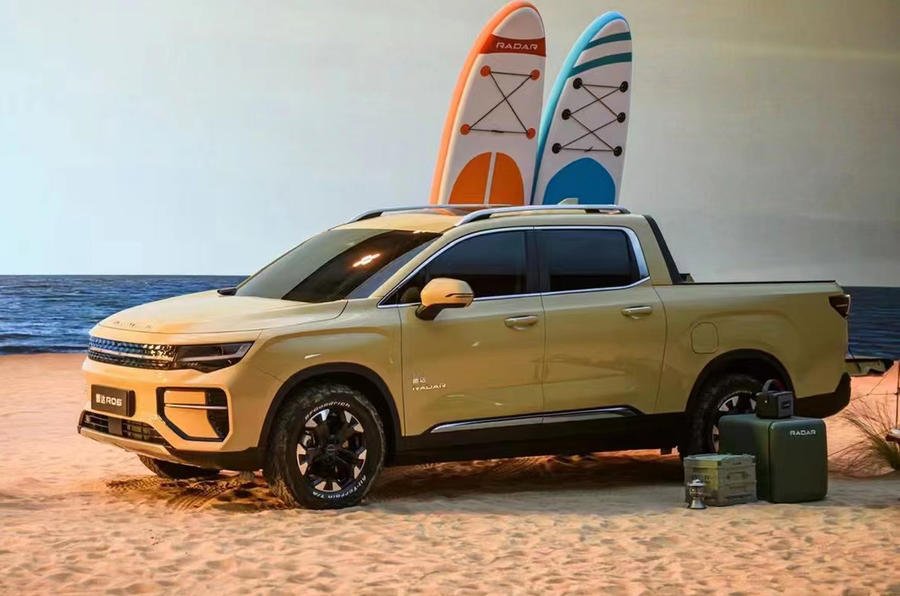We’ve been talking a lot about the Chinese automotive industry lately but this is the first time we hear about a zero-emissions pickup truck coming from a local manufacturer. Sure, there are a few mini electric trucks but the Radar Auto RD6 could very well be China’s first lifestyle adventure electric truck that is going to be sold to the masses. If you’ve never heard about Radar Auto, don’t worry – this is its first product so far.
The automaker was recently established by Geely, one of China’s largest automotive manufacturers and owner of Lotus, Volvo, and Polestar, as an electric outdoors lifestyle vehicle brand. The RD6 takes the shape of a compact electric truck with four doors, based on Geely’s Sustainable Experience Architecture (SEA) used for purely electric models. This modular platform was unveiled in December 2020 and can be used for cars from the A segment to the larger D and E segments, and even for light commercial vehicles.
Not much is known about what powers the RD6 but Geely says the truck has "considerable technology underpinnings that will include single and dual motor options." According to our friends at InsideEVs, power will range from 200 horsepower to 400 horsepower, while the range between two battery charges could be as high as 373 miles (600 kilometers) based on China’s relatively generous CLTC. However, nothing of this can be confirmed until Radar Auto reveals official figures.
Reportedly similar in size to the Ford Ranger, the Radar Auto RD6 has a front trunk and a cargo bed with external power outlets. The official press photos of the model envision the electric truck as a lifestyle vehicle for surfers and camping adventurers, though with so many power sockets at the back and a functional load area we can also see it as a solid workhorse.
The RD6 is planned to reach production in the fourth quarter of this year with first deliveries to customers coming shortly after. There’s no pricing available yet but, if everything with the electric truck goes on plan, Radar Auto is reportedly eyeing an expansion to markets outside China, including a potential US launch.
Related News

